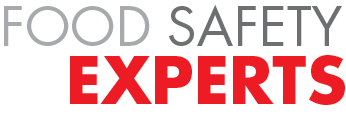What Do Your Guests see? A Front of House Checklist to Ensure Quality and Safety of Food
Hi Everyone! Here it is September already – Food Safety Education Month! Where did the summer go????
As you may recall from the first blog posted in August, we talked about how Risk-Based Inspections are the new normal for most regulatory health authorities and the importance of day-to-day oversight to prevent foodborne illness and ensure quality of food served. In our opinion every staff member in the foodservice operation has a role to play in keeping food safe and meeting quality standards.
Being big believers in checklists, we created a 21-point checklist (see second August blog) to help address key risk factors in the back of the house–time and temperature controls, food from approved sources, cleaning and sanitizing, and of course, employee health and hygiene.
As promised, here is a checklist focused on activities that occur in the front of the house. We advise that before doors open each day (or before each meal period), a “walk about” be conducted to see what your customers will see. This task can (and should) be rotated among staff members. (Of course, supervisor still need to monitor practices throughout the operation to be sure policies and procedures are followed.) For any item that receives a “No”, corrective actions should be noted indicating changes made to meet the standard. Whoever has the assignment for the day, signs their name. This checklist has 28 items focused on staff and the facilities (think of these as people and place). Of course, you can modify this checklist to address specifics for your operation. But the key is to raise awareness that the responsibility for safe food belongs to everyone, and to train the eyes of staffers to recognize needed areas of improvement!
Risk Nothing!

READ MORE POSTS
Mitigation Strategies for Cross Contamination
In our last blog, we talked about cross contamination, including the related risks and sources. Our focus today will be on some of the major strategies that can be used to mitigate cross contamination in a foodservice operation.
Cross Out Cross Contamination
Cross contamination is a major risk factor contributing to foodborne illness, but there are steps that you can take in your foodservice operation to mitigate the risk. In this blog, we cover the basics of cross contamination, the risks that result, and sources of cross-contamination so that you can understand the serious risk it presents. In the next blog, strategies to lower this risk will be covered.
Meet the Food Safety Leadership Team
Meet FoodHandler's Food Safety Leadership Team:
Announcement from FoodHandler’s Sales Manager
We are pleased to announce that our new food safety consultants—Dr. Jeannie Sneed and Dr. Cathy Strohbehn—will be writing blogs twice each month, on the first and fifteenth. Their goal is to make these blogs relevant, and to continue conversations about food safety among foodservice operators. We invite you to contact them to ask questions, share success stories, make suggestions for blog topics, or provide other thoughts you have about food safety. You can email them at foodsafety@foodhandler.com








